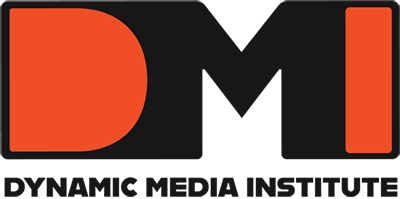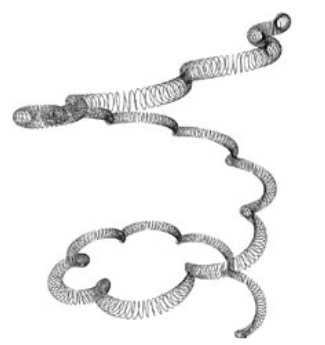Carlos Lunetta, MFA ’05
project
Edwin Abbott, English writer and clergyman, published in 1884 a short book called ”Flatland”. The book is an interesting and very early exercise into the perception of space; the human being lives in 3+1 dimensions — 3 spatial planes and a punctum of time. The characters of Flatland live in a 2+1 universe; thus the flatness of the title, the completely eliminated perception of volume.
It is an interesting exercise to alter the relation between spatial and temporal dimensions; the ”Patterns of Time” project explored an inversion on the perception of time and space; instead of 3+1 dimensions, 1+3. How can we expand time in more dimensions, while compressing space to a punctum? What is the spatial component of time?
The computational medium is a good support for this kind of experiment; it allows great flexibility for experimentation, and helps the imagination in such a entangled topic. The project proposal is an interface that allows the compression/expansion of dimensions to occur; it does not intent to be scientific, but poetic.
It is easy to imagine all the special dimensions compressed to a point; timelines do that. A timeline transforms all the physical events to a printed point; time becomes a line, dot after dot representing day after day, year after year. But is time a line? The characters of Abbot’s Flatland had the firm belief that a third dimension didn’t exist at all — things were flat by nature. The visualization of time as a line of events might be stuck in a Flatland mentality.
Pattern is a concept of many definitions, but they all agree in the idea that a form may exist and be recurrent according to a rule — a configuration. Patterns are everywhere in nature — the configuration of clouds, waves, the growth of plants, structure of minerals. Common laws sew different realms together, binding them by mathematical concepts like golden ration and prime numbers.
The idea of pattern is usually employed to describe spatial or logical events; the project idea was to extend this application to time as well — escaping temporal Flatland.
What are the components of time?
According to a personal point of view, corroborated by the quantum physics and approved by poetic license, time is light. Light is a periodic wave vibration, thus time probably shares the same properties of periodic waves — known as amplitude, wavelength and phase.
What is the amplitude, wavelength and phase of time?
Phase is the point of the amplitude at which a wave begin. Applied to time, phase should be neutral — time starts at the beginning of time (a recursive tautology). Amplitude and wavelength are related to the notion of facts.
What marks the passage of time? Facts. The happening of facts in the physical world is a beacon for proofing the time flow.
Each fact in time is unique; but facts share similar configurations. Facts form patterns; there’s a summer in every year — it’s a predictable event. Each summer is unique, but events that characterize the fact “summer” happen every year.
In different scales, all facts have patterns of occurrence — some of them are obvious, other subtle.
The facts in time are points in the amplitude wave. Each fact follows a pattern of occurrence, so each fact has its own frequency, wavelength.
How to represent the concept of patterns in time visually?
The developed model of time used the line as a starting metaphor, added with the pattern idea. The facts have a frequency of occurrence, so they can have a cyclic nature. The end of each cycle does not mark the return to the beginning; the line of time continues to the future. So the cycle is not a closed circle — it is a line with a coil appearance.
Different patterns have different frequencies; bigger patterns encapsulate smaller ones — like an year encapsulate 365 days. So the coil is not absolute, it is formed by another coil; which is formed by another and other in an infinite progression.
The computer is a helper to achieve such concept in a visual way; the initial project was done after research on coil algorithms, and how could they be applied. A recursive coil model was developed in 3D, and a Flash demonstration of the concepts, was built around it. The “Location of Time” is a demonstration of the concepts of time and space, and it was projected to be the initial point of a functional interface.
The interactive version of the Location of Time was partially coded — at the cost of much sweat — since the concept is very challenging mathematically. Infinite levels of recursiveness in a three dimensional structure is not exactly the everyday problem solving task of a designer. The first levels of time recursion can be explored through different points of view, and different time line compression. Technically, the code describes a big three dimensional polygon with variable sides, and variable vertex frequency. The user can tweak and experiment on every possible parameter of the timeline and the code is suitable for screen or print, in any given size.
Keywords: algorithm, time, visualization


